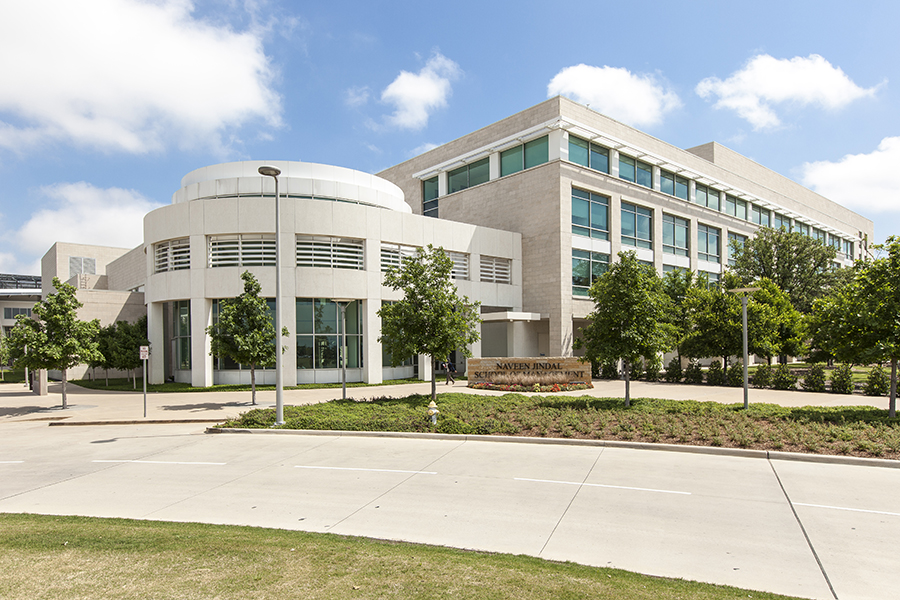School of Management Ranks Business Schools According to Research Productivity of Faculty
By: Office of Media Relations | Feb. 8, 2005
RICHARDSON, Texas (Feb. 8, 2005) – The School of Management at The University of Texas at Dallas (UTD) today released a new study – believed to be the most comprehensive of its kind ever undertaken – that ranks the top 100 business schools on the basis of the research productivity of their faculty members.
The study, titled “The UTD Top 100 Business School Research Rankings,” tracks the publications of business school faculty worldwide since 1990 in 22 leading academic journals, all of which are peer-reviewed. It then ranks the business schools based on the number of articles published in those journals by their faculty members between 2000 and 2004.

A database of the study’s rankings of both the top 100 North American business schools and the top 100 business schools worldwide is published on the website of the school’s Center for Information Technology and Management (CITM), at http://citm.utdallas.edu/utdrankings/.
The top-ranked business schools on both the North American and worldwide lists are identical, with the Wharton School at the University of Pennsylvania in first place, followed in order by the Harvard Business School, the Leonard N. Stern School of Business at New York University, the Columbia Graduate School of Business and the Sloan School of Management at MIT.
The UTD School of Management ranked 35th on the North American list and 38th worldwide.
UTD School of Management Dean Dr. Hasan Pirkul said the study was more than just an attempt to rank business schools.
“It’s significantly more than that. The findings are designed to be useful to both business school administrators and faculty members in measuring their research productivity in the set of journals included in the study,” he said.
Pirkul noted that CITM researchers would work to continually update the rankings on the database as the journals — which address topics across a variety of business school disciplines — are published.
“We are providing a tool for business school faculty members as well as administrators to do benchmarking against their peers. Using the tool, one can create rankings for selected time periods and subsets of the journals. They can conduct a longitudinal study about their own relative position over time and assess the productivity of faculty groups and departments as well as individual faculty members,” he said.
The dean added that, because faculty research plays an important role in providing students with the most advanced educational experience, the rankings should also be of interest to the general public.
“Research is an integral part of the work of institutions of higher education. There are many rankings, particularly of MBA programs. These rankings in themselves are important. But they often do not address this important aspect. We are trying to fill that void.”
The impetus for the UTD study was a 2002 study by two University of Connecticut researchers, James R. Marsden and Ravi Bapna, who measured the research productivity of business school faculties in quantitative and technical fields such as operations management and management information systems. The UTD School of Management ranked 6th worldwide in that study, which was published in the December 2002 issue of ORMS Today.
In addition to widening the scope of the Marsden and Bapna study to include more academic fields, the UTD team created an online tool that provides the user with the ability to pose a number of different queries.
The team also shared a preliminary version of the database tool and the resulting rankings with deans of other Association for the Advancement of Collegiate Schools of Business (AACSB)-accredited business schools. Much of the feedback regarded the choice of journals selected as measuring tools.
“There was wide agreement on most of the journals, because they are considered the leading publications in their fields,” said CITM Assistant Director Rishi Pagnis. “A few of the deans asked why a particular journal was not included, but there was no real disagreement about the ones we chose.”
Also based on the feedback, the team decided not to adjust for size of faculty when ranking a school.
The UTD study’s team also included Dr. Varghese Jacob, professor of information systems and senior associate dean of the School of Management; Dr. Michael Savoie, director of CITM; Dr. Young Ryu, also an information systems professor; and Jessica Brown, assistant to Dr. Jacob.
Although he considers the study’s findings an important measure of business school excellence, Pirkul cautioned against over-generalizing the findings it presents.
“By no means should the research productivity in 22 journals be interpreted as capturing a school’s total research production,” he said. “The results should be considered with that caveat in mind.”
About The UTD School of Management
The School of Management is the largest of UTD’s seven schools, with an enrollment that has doubled over the last nine years to more than 4,400 students. The school’s new, 204,000-square-foot building — featuring classrooms with state-of-the-art audio and visual equipment, wireless connectivity, video-conferencing facilities, a computer lab, faculty offices, meeting rooms and an executive education center — opened in August 2003.
About UTD
The University of Texas at Dallas, located at the convergence of Richardson, Plano and Dallas in the heart of the complex of major multinational technology corporations known as the Telecom Corridor®, enrolls more than 14,000 students. The school’s freshman class traditionally stands at the forefront of Texas state universities in terms of average SAT scores. The university offers a broad assortment of bachelor’s, master’s and doctoral degree programs. For additional information about UTD, please visit the university’s web site at www.utdallas.edu.
Media Contact:
Office of Media Relations, UT Dallas, 972-883-2155, newscenter@utdallas.edu, or the Office of Media Relations, UT Dallas, (972) 883-2155, newscenter@utdallas.edu.





